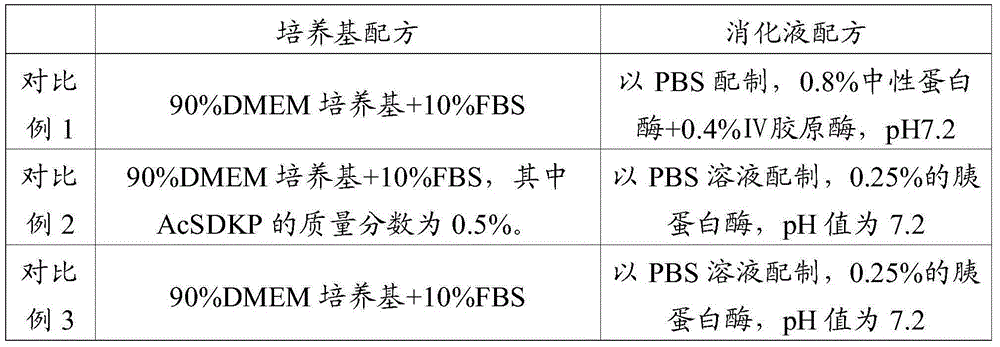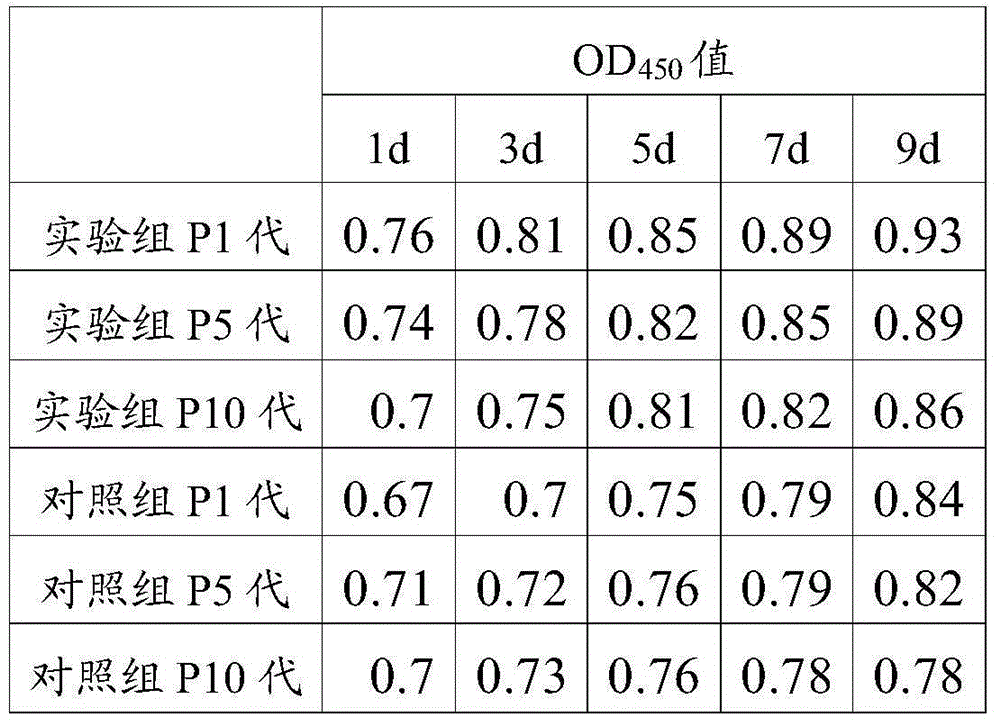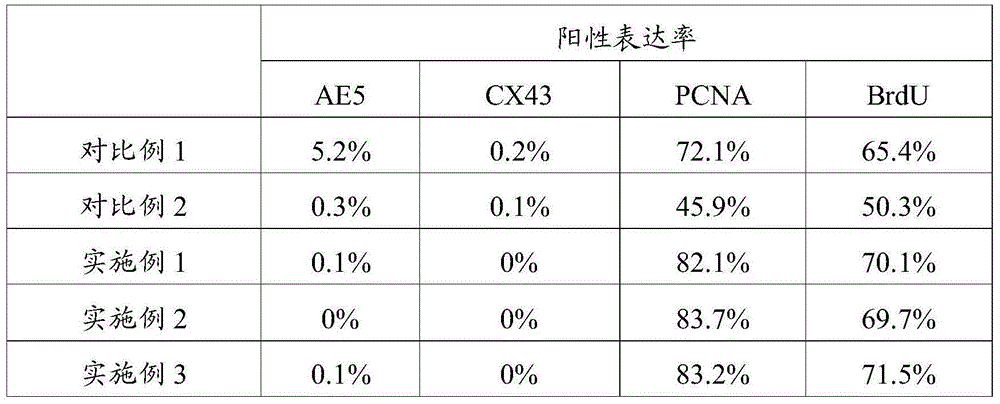Separation method of limbal stem cells
A corneal limbal stem cell and separation method technology, applied in the field of corneal limbal stem cell separation, can solve the problems of fibroblasts being difficult to adhere to the wall, reducing cell purity, etc., and achieving the effects of reducing damage, increasing cell yield, and improving purity
- Summary
- Abstract
- Description
- Claims
- Application Information
AI Technical Summary
Problems solved by technology
Method used
Image
Examples
Embodiment 1
[0053] Compound enzyme solution: prepared in PBS, 0.75% neutral protease + 0.50% IV collagenase, pH7.2
[0054] Medium: 90% DMEM medium + 10% FBS, wherein the mass fraction of AcSDKP is 0.5%.
[0055] The eyeballs of dead fetuses with a gestational age of 3-7 months were soaked in PBS containing double-antibody (penicillin-streptomycin, 1×) for 3 minutes in a sterile environment, and then rinsed with PBS without double-antibody.
[0056] Under the operating microscope, use tissue forceps and corneal scissors to cut the human corneal limbal tissue, and then use scissors to cut the tissue into about 1mm 3 blocky in size.
[0057] According to the volume of the tissue block, every 1cm 3 Add 5ml compound enzyme solution to the tissue block, digest at 37°C for 15min, add PBS containing 10% FBS to stop digestion per 1ml of digestion solution, filter with 100um mesh, centrifuge at 1000rpm for 5min, discard the supernatant, add culture medium, dilute at 1×10 5 The density of cell / m...
Embodiment 2
[0060] Compound enzyme solution: prepared in PBS, 0.8% neutral protease + 0.4% IV collagenase, pH7.2
[0061] Medium: 90% DMEM medium + 10% FBS, wherein the mass fraction of AcSDKP is 0.8%.
[0062] The eyeballs of dead fetuses with a gestational age of 3-7 months were soaked in PBS containing double-antibody (penicillin-streptomycin, 1×) for 3 minutes in a sterile environment, and then rinsed with PBS without double-antibody.
[0063] Under the operating microscope, use tissue forceps and corneal scissors to cut the human corneal limbal tissue, and then use scissors to cut the tissue into about 1mm 3 blocky in size.
[0064] According to the volume of the tissue block, every 1cm 3 Add 5ml compound enzyme solution to the tissue block, digest at 37°C for 10min, add PBS containing 10% FBS to each 1ml of digestion solution to stop digestion, filter with 100um mesh, centrifuge at 1000rpm for 5min, discard the supernatant, add medium, dilute at 1×10 5 The density of cell / ml was ...
Embodiment 3
[0067] Compound enzyme solution: prepared in PBS, 0.78% neutral protease + 0.45% IV collagenase, pH7.2
[0068] Medium: 90% DMEM medium + 10% FBS, wherein the mass fraction of AcSDKP is 1%.
[0069] The eyeballs of dead fetuses with a gestational age of 3-7 months were soaked in PBS containing double-antibody (penicillin-streptomycin, 1×) for 3 minutes in a sterile environment, and then rinsed with PBS without double-antibody.
[0070] Under the operating microscope, use tissue forceps and corneal scissors to cut the human corneal limbal tissue, and then use scissors to cut the tissue into about 1mm 3 blocky in size.
[0071] According to the volume of the tissue block, every 1cm 3 Add 5ml compound enzyme solution to the tissue block, digest at 37°C for 20min, add PBS containing 10% FBS to each 1ml digestion solution to stop digestion, filter with a 100um mesh sieve, centrifuge at 1000rpm for 5min, discard the supernatant, add the culture medium, and dilute with 1×10 5 The ...
PUM
 Login to View More
Login to View More Abstract
Description
Claims
Application Information
 Login to View More
Login to View More - R&D
- Intellectual Property
- Life Sciences
- Materials
- Tech Scout
- Unparalleled Data Quality
- Higher Quality Content
- 60% Fewer Hallucinations
Browse by: Latest US Patents, China's latest patents, Technical Efficacy Thesaurus, Application Domain, Technology Topic, Popular Technical Reports.
© 2025 PatSnap. All rights reserved.Legal|Privacy policy|Modern Slavery Act Transparency Statement|Sitemap|About US| Contact US: help@patsnap.com



